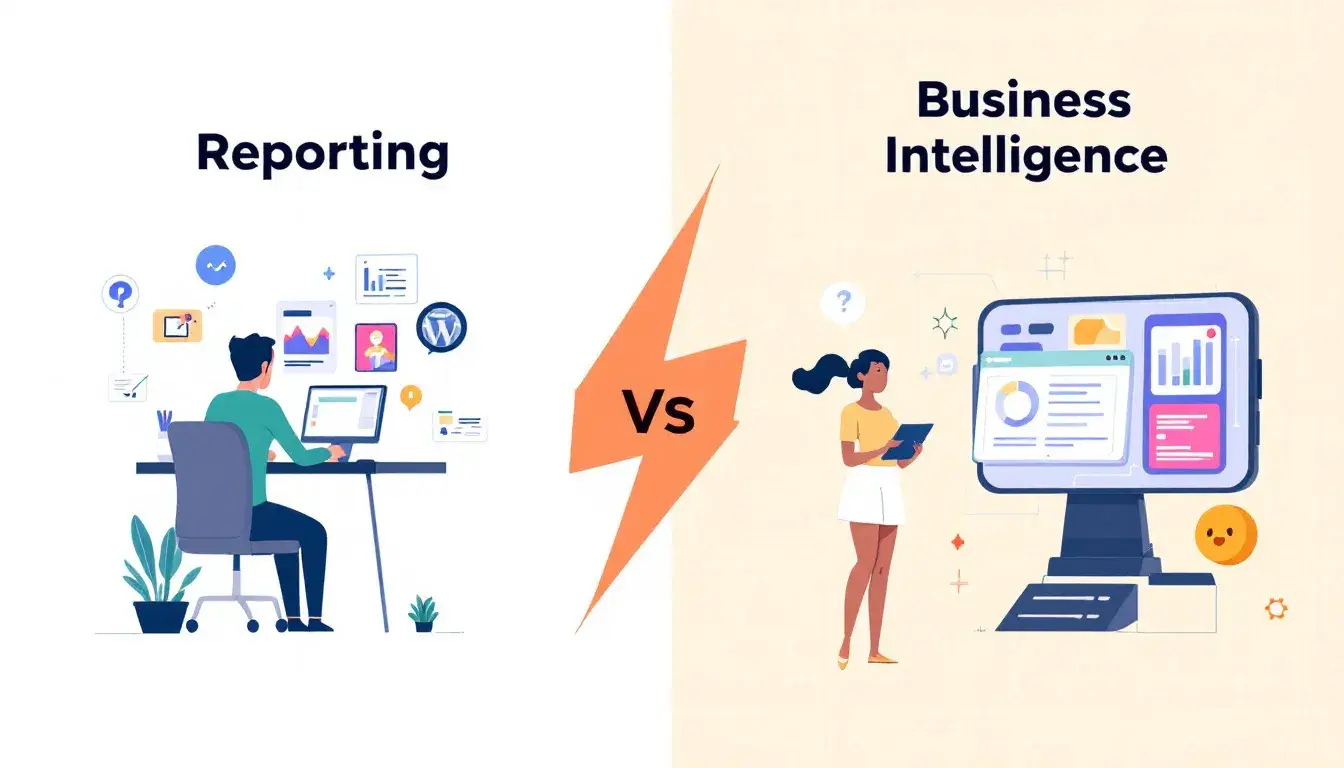
Discover how to effectively utilize business intelligence reporting to drive informed decision-making and improve organizational performance.
In today’s rapidly changing business landscape, the ability to make informed decisions based on accurate and timely information is crucial. This is where business intelligence reporting comes into play. As a manager, mastering the art of business intelligence reporting is essential for driving success and staying ahead of the competition.
Understanding Business Intelligence Reporting
In today’s digital age, businesses are inundated with vast amounts of data. From customer information to market trends, this data holds the key to unlocking valuable insights and gaining a competitive edge. Business intelligence reporting allows managers to transform raw data into actionable information, enabling them to make well-informed decisions.
Key Concepts in Business Intelligence Reporting
Before diving into the world of business intelligence reporting, it’s important to understand some key concepts. Firstly, business intelligence relies on data warehousing, which involves collecting, organizing, and storing data from various sources. Secondly, data analytics and visualizations are essential components of business intelligence reporting, as they help managers interpret and understand the data more effectively.
Moreover, an integral part of business intelligence reporting is the use of key performance indicators (KPIs). KPIs are quantifiable metrics that reflect the performance of an organization in achieving its strategic objectives. By tracking KPIs through business intelligence reporting, companies can monitor their progress, identify areas for improvement, and make data-driven decisions to drive growth.
Additionally, data governance plays a crucial role in ensuring the accuracy, consistency, and security of data used in business intelligence reporting. Data governance frameworks establish policies, procedures, and controls to manage data assets effectively, mitigating risks associated with data quality and compliance. Implementing robust data governance practices is essential for organizations to maintain trust in their data and derive meaningful insights for strategic decision-making.
The Role of a Manager in Business Intelligence Reporting
As a manager, your role in business intelligence reporting goes beyond simply consuming the reports. You need to take the lead in overseeing the entire reporting process. This includes identifying the key metrics and data sources, establishing data collection and storage procedures, and ensuring the accuracy and reliability of the reports generated.
Ensuring Data Accuracy and Relevance
One of the challenges in business intelligence reporting is ensuring the accuracy and relevance of the data. As a manager, you must establish data quality standards and implement measures to validate and verify the data. Additionally, you should constantly evaluate the relevance of the metrics being reported to ensure they align with your business goals and objectives.
Collaborating with Cross-Functional Teams
Effective business intelligence reporting requires collaboration with cross-functional teams within the organization. As a manager, you play a crucial role in fostering communication and cooperation between departments such as IT, finance, marketing, and operations. By working closely with these teams, you can ensure that the data being collected and reported on is comprehensive and reflects the diverse needs of the organization.
Implementing Data Visualization Techniques
Another important aspect of business intelligence reporting is the presentation of data in a clear and meaningful way. As a manager, you should explore various data visualization techniques such as charts, graphs, and dashboards to help stakeholders easily interpret the information. By implementing visually appealing and informative reports, you can enhance decision-making processes and drive strategic initiatives within the organization.
Tools and Techniques for Effective Business Intelligence Reporting
Choosing the Right Business Intelligence Tools
![]()
With a plethora of business intelligence tools available in the market, choosing the right one can be overwhelming. It’s essential to assess your specific needs and requirements before making a decision. Consider factors such as scalability, ease of use, integration capabilities, and the ability to generate meaningful visualizations.
When evaluating different business intelligence tools, it’s crucial to also consider the level of support and training provided by the vendors. A tool may have all the features you need, but without adequate support, your team may struggle to fully utilize its capabilities. Look for vendors that offer comprehensive training programs and responsive customer support to ensure a smooth implementation process.
Techniques for Interpreting Business Intelligence Reports
Interpreting business intelligence reports is an art in itself. As a manager, it’s important to develop a deep understanding of the data and the story it tells. Look for patterns, trends, and outliers that can provide valuable insights. Additionally, consider the context in which the data was collected and how it relates to your business operations.
One effective technique for interpreting business intelligence reports is to create data visualizations that highlight key findings. Visual representations of data, such as charts, graphs, and dashboards, can make complex information more digestible and facilitate quicker decision-making. By incorporating visual elements into your reports, you can enhance the clarity and impact of the insights you present to stakeholders.
Developing a Business Intelligence Reporting Strategy
Setting Goals for Business Intelligence Reporting

Before diving into business intelligence reporting, it’s crucial to define your goals and objectives. What insights are you looking to gain? What metrics are most important to your business? By setting clear goals, you can ensure that your reporting efforts are focused and aligned with your overall business strategy.
When setting goals for business intelligence reporting, it’s important to consider both short-term and long-term objectives. Short-term goals may include improving operational efficiency, identifying cost-saving opportunities, or optimizing marketing campaigns. Long-term goals could focus on strategic planning, forecasting future trends, or enhancing decision-making processes. By establishing a mix of short-term wins and long-term strategic objectives, your reporting strategy can deliver value across various time horizons.
Implementing and Monitoring the Reporting Strategy
Once you have set your goals, it’s time to implement your reporting strategy. This involves selecting the appropriate data sources, designing the reporting framework, and establishing a reporting cadence. Regularly monitor your reporting efforts to track progress, identify areas for improvement, and make adjustments as needed.
Implementation of the reporting strategy should also include considerations for data governance, data quality, and data security. Ensuring that the data used for reporting is accurate, reliable, and secure is essential for making informed business decisions. Implementing data governance policies, conducting regular data quality checks, and employing robust security measures can help maintain the integrity of your reporting processes.
Overcoming Challenges in Business Intelligence Reporting
Dealing with Data Quality Issues

Data quality is a common challenge in business intelligence reporting. Inaccurate or incomplete data can lead to flawed insights and poor decision-making. To overcome this challenge, establish data quality standards, implement data validation processes, and conduct regular data audits. Additionally, consider investing in data cleansing tools to ensure the integrity of your data.
Addressing Technical Challenges in Reporting
Technical challenges, such as data integration issues or system compatibility, can hinder the effectiveness of business intelligence reporting. Work closely with your IT department to address these challenges proactively. Regularly assess your reporting infrastructure, update software as needed, and stay informed about emerging technologies that can enhance your reporting capabilities.
While data quality and technical challenges are significant hurdles in business intelligence reporting, there are other key obstacles that organizations may face. One such challenge is the lack of user adoption and engagement with the reporting tools and insights provided. It is essential to not only have robust reporting systems in place but also to ensure that end-users are trained effectively on how to interpret and utilize the data to drive decision-making.
Another critical aspect to consider is the scalability of your business intelligence reporting. As your organization grows and data volumes increase, your reporting systems need to be able to handle the additional load efficiently. This may require regular performance testing, optimization of databases, and potentially investing in more powerful hardware or cloud-based solutions to support your reporting needs.
Argos Software: Elevating Your Business Intelligence Reporting
Ready to elevate your business intelligence reporting? Consider Argos Software. Our comprehensive suite of tools is designed to streamline your reporting process, ensuring data accuracy, relevance, and impactful visualizations. With Argos Software, you gain access to advanced data integration, customizable reporting options, and insightful analytics, all tailored to support informed decision-making and strategic planning in your organization. Contact us today to learn more.




